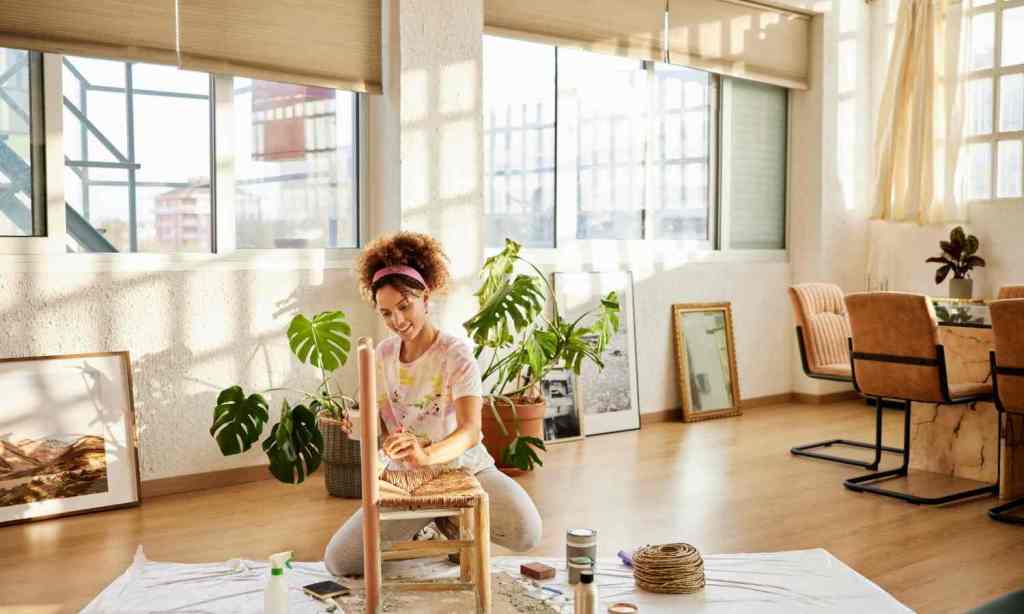The Latch has partnered with Suncorp Bank to deliver sustainability content that helps our readers drive positive action in their everyday lives.
Once upon a time, people used only materials in their immediate surroundings to build and furnish their homes. In Asia, this may have looked like stilt houses with straw or reed bundles used for the roof. While in Australia, Indigenous people in Victoria once used stones to build robust homes.
Our ancestors were keenly attuned to creating buildings and homes in tandem with the climate, natural environment, and with only resources readily available. Our generation is quite the opposite because we live in hyper-urbanised environments, where unless you live outside of the city, it’s unlikely you have built your own home.
However, this doesn’t mean we can’t select natural and environmentally-friendly furnishings and fabrics to put inside our houses. It might require a bit of extra research and digging, but it’s possible.
Here are three things to keep in mind when redecorating your home.
Make it Plant-Made
Sustainable shopping asks us to reconnect with the materials used to create the products we use daily.
Opting for plant-made materials like linen, hemp, cotton, jute, bamboo, ramie, flax, rice, teak, and even seaweed, in your fabrics and furniture is a good stepping stone to sustainable furnishing. These materials, when extracted and treated with care, are not as harmful to the environment and give homes a light, relaxed and clean style.
These materials are commonly found in bedsheets, cushion covers and curtains. And the same principle also applies to homewares — look out for dinnerware, mugs and cups made from clay, porcelain, or glass.
When you see words like ‘organic’ or ‘natural’ in the description of a product, look deeper for further explanations of the specific plant-based materials used during the production. In case you’re unsure, examples of non-organic materials — which are sometimes harder to disintegrate or be returned to earth without impact — are tin cans, glass crockery, metals, and plastic.

It’s important to also understand that it’s not as simple as calling all materials like polyester, acrylic, lycra, nylon, spandex, polyester fleece, elastane or polyamide bad. They usually don’t last well in washing machines, nor do they return back to the earth well (due to the high level of plastics found in them), meaning they will usually end up in landfills. However, there are companies using recycled versions of these fabrics, thus saving them from being discarded after one use.
DIY and Upcycle

One of the key tenets of sustainability is reducing consumption by using or upcycling what we already have. In the case of re-decorating your home, this could look like re-thinking broken or malfunctioning items in your home for other purposes. For example, there are ingenious resources on the internet that show how to turn rice cookers into planters, cribs into craft stations, drawers into side tables, old luggage into chairs, and so much more.
This exercise definitely requires some time and creativity, and is best done with someone who has experience with tools. If you find you don’t have the time to do it yourself, you could also consider sending your existing items for re-upholstering.
The satisfaction of a DIY project is also the personal effort and accomplishment that comes with it, versus buying something blindly off the internet made and fixed by someone else. This ownership of our items is just one way to resist capitalist impulses of buying something new that is deemed better for the simple fact that it’s new.
Shop Secondhand
If you barely have time for hobbies or activities outside of work and friends, you can opt for shopping at flea markets, garage sales, or online marketplaces for secondhand options instead of doing it yourself.
Shopping for pre-loved furniture and fabrics might involve a bit more close inspection and imagination, but the satisfaction of bagging a bargain is unmatched. Check for damage, and also think about the current pieces in your home to be sure it matches what you’re looking for.
You could even look up particular brands or styles in secondhand shops to see if anyone has let go of the piece you were originally looking for.
Read more stories from The Latch and subscribe to our email newsletter.







